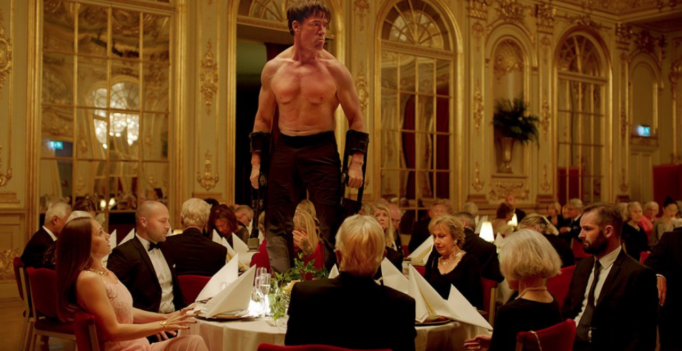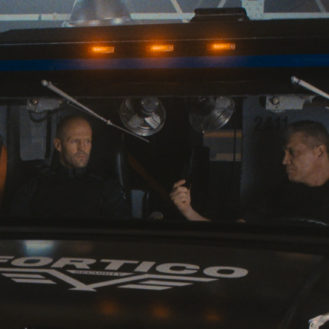By: Trevor Chartrand
Striking and unconventional, The Square successfully combines comedy with intense drama to create an unforgettable satirical gem.
The film follows Christian (Claes Bang), a pompous art museum curator whose life begins to spiral out of control after he is robbed while travelling to work. He immediately reveals his narcissistic side, exploiting others in effort to reclaim his stolen property. Ironically, the latest art piece he is promoting at his museum is an outdoor exhibit that encourages generosity, trust, and social understanding – three traits he fails to demonstrate in his own life.
Thematically, the film and the art installation share a similar message – both encourage society to look out for others, especially the less fortunate. It’s essentially a call-to-arms to be the Good Samaritan at every opportunity in a world where everyone looks the other way. As a protagonist, the indifferent Christian personifies one of the worst offenders of all – a public figure promoting a message he clearly does not abide by. The surface hypocrisy that he overcomes is, I suspect, supposed to be taken as evidence that if this character can change, anyone can.
Regrettably, this incredibly funny, remarkable film has the misfortune of feeling a tad preachy due to thematic overindulgence. The film’s drama, characters, and technical style are all executed with the perfect amount of restraint, only to be overwhelmed by the heavy-handed message. By the film’s mid-point, the lesson had become quite clear, but Force Majeure writer/director Ruben Östlund’s script continues to relentlessly establish the importance of assisting others. We constantly see situation after situation where someone fails to help a person in need, and the overall pacing suffers as a result. If this weren’t excessive enough, The Square takes it even further when Christian actually says, out loud, that he’s learned the moral of the story. Obviously it’s great to have a well-intentioned meaning in your film, but the character may as well be looking right into the camera by this point. The only justification may stem from Östlund’s belief that the theme must be repeated to really stick with people, in effort to change an uncaring society.
Despite the not-so-subtle subtext, The Square does have a lot to offer, effectively utilising incredible visuals and a unique soundscape to enhance each sequence. Cinematographer Fredrik Wenzel regularly proves that he isn’t afraid to use negative space, with some wide frames only revealing as much as a character’s elbow. These visual styles and framing techniques provide a voyeuristic, observational feel throughout. The method works especially well when key dramatic points are pushed to the edge of the frame – occasionally even occurring entirely off-screen.
The clever use of sound in The Square is also impressive in its own right, often used to add levity or comic effect. Almost every scene has an extraordinary soundscape that alters the drama as it unfolds. A would-be forgettable scene where characters discuss marketing strategies stands out when no one acknowledges that there’s a crying baby in the boardroom. Later, the sporadic noise of a loud art installation interrupts the flow of two lovers’ arguing. Each sound oddity is positioned with careful purpose and successfully redefines the context of the scene.
I found it especially interesting when this less-conventional, ‘artsty’ film took frequent shots at the art community in general, often mocking abstract art and the people who value it. When we first meet Christian, for example, he struggles to explain a pretentious rambling statement he made, clearly making up an answer on the fly. When an art exhibit is later ruined by one of the museum janitors, Christian laughs it off and reconstructs the art himself. While The Square is a powerful film and certainly an artistic achievement, it’s also self-aware enough to not take everything too seriously. The film both embraces, and makes fun of, the world of higher art.
At the very least, The Square is worth seeing for actor Terry Notary’s performance art scene alone. His character Oleg performs as an ape, never breaking character despite shocked reactions from wealthy dinner party guests. The scene effectively demonstrates – you guessed it – just how much injustice it takes before idle bystanders will step in to help those in need.
**********
Do You Tweet? Follow These Tweeple:
Trevor Chartrand: @OhHaiTrebor





Be the first to comment